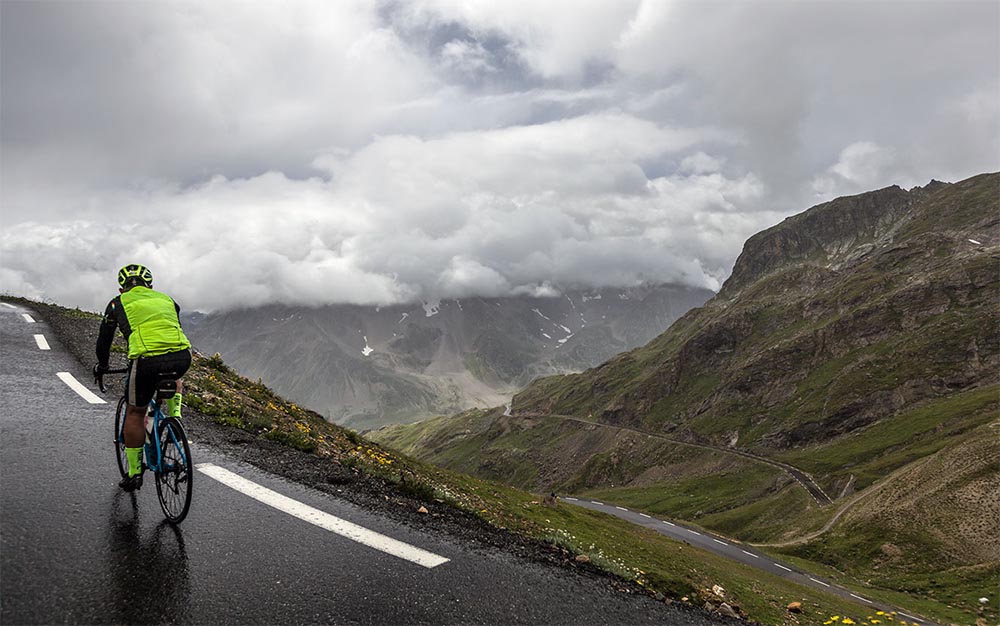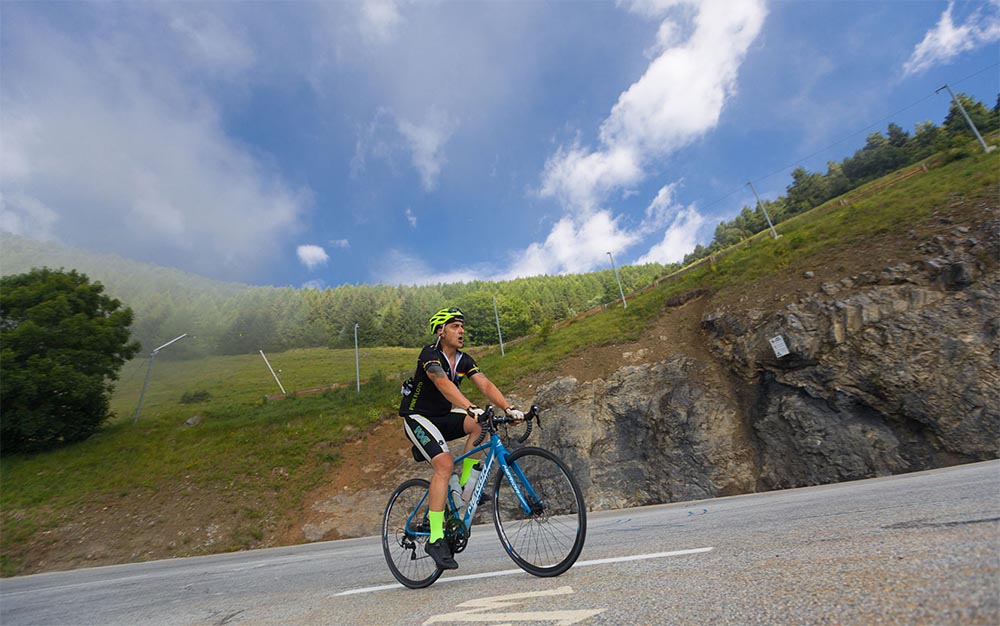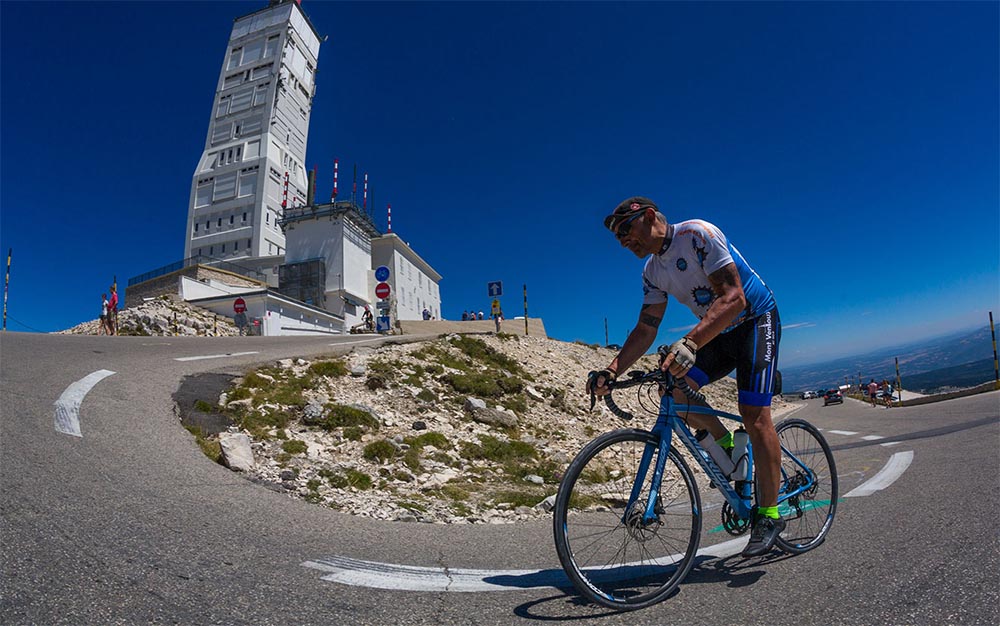How to Bike Uphill – A Road Bike Climbing Guide

How should you ride a bike uphill? This article will help you develop good uphill riding technique. It doesn’t matter whether you ride for fun, work or competition. No doubt you will encounter many steep inclines in your riding career. If you take the time to develop the pointers we recommend here, you’ll ride up hills more easily. Who knows, you might even start enjoying them.
Learning how to ride a bike uphill without exhausting yourself will help you navigate the hills without getting tired. Understanding the basics of storing and conserving energy is a good place to start. When you do, you will find that you are ready for the rest of the journey.
All these tips are put into practice in the Alps. Two members of Cyclxr completed five of the toughest Tour de France climbs in five days. Alp’D Huez, Galibier, Izoard and both sides of Mont Ventoux (Salt and Bedoin) participated in the challenge. The drivers were 54 and 64 years old.
Road Bike Climb – Planning and Prep
Much of your improvement will come from the planning and preparation you do before your ride. Think about how many climbs you have faced and one of them you will encounter. If you live in the flats of Norfolk, you may need to seek out the challenge of the hills, but in Devon, Cornwall or Scotland, it’s not uncommon to climb 10,000 feet on a standard weekend ride. Take this standard 65km ride in Cornwall, for example.
Make sure to complete demanding climbs after you’ve had a chance to warm up and properly hydrate, and make sure you’re eating enough calories the night before. While sugary candy will get you out of trouble, there’s no substitute for getting it right first.
Make sure you always have water on hand and rehydrate regularly throughout your ride. Some experts recommend that you eat a high-carb snack around 90 minutes into the ride, and then continue with 125 calories per hour after that. The key is that you listen to your body. Making big climbs when you’re hungry, low on energy, or don’t have enough reserves is asking for trouble.
Endurance and Strength Training
no pain no gain. One of the best ways to improve your endurance and speed on steep slopes is to train for it. The combination of endurance and strength training will give your cardiovascular boost and the strength to tackle any hill.
If you don’t have a gym membership, don’t worry. Cycling has a lot of great bodyweight workouts. All of these fire up major muscle movers, including your glutes, quads, hamstrings, and calves.
Remember to consult your doctor or strength and conditioning coach before starting any sustained exercise program.
With consistent training, your muscles and core will get stronger during cardio, and you’ll experience less fatigue, especially later in the ride. If you can hit the gym, start with squats, leg extensions, leg curls, and seated leg presses.
body posture and technique
If you’re a beginner, we covered how to ride a road bike in a previous post, but using the correct body position is especially important when learning to ride your bike uphill efficiently.

Road Bike Climbing Tips – Stay Seated As Long As You Can
When riding in the saddle, you use your large muscle groups (quadriceps, hamstrings, and glutes). However, when you stand up, you can almost fully devote yourself to it. So while standing is a common response to steep inclines, it can lead to rapid burnout. Standing up also increases power transfer to the rear wheels. This extra power can cause the rear wheel to spin, especially on wet or loose surfaces.
How to ride a bike up a mountain
Riding on the hood is perfectly acceptable, however, make sure you are over the front handlebar, looking down on the stem or front wheel spindle.
rhythm and pace
Once you’ve planned your route, you’ll know when to get to the climb or climb. Think about the future. When you see that the climb is coming, start preparing yourself. Don’t attack the mountain for its full value. Starting too fast and expecting the momentum to carry you the rest of the way is sure to be exhausting quickly. It’s best to set a steady pace and keep it at the top of the hill. Think “slow and steady to win the game”.
Road Bike Climbing Rhythm
We wrote about rhythm here. When climbing, the goal is to maintain the highest cadence possible. Grinding steep sections will always leave you struggling at some point. This is completely normal. You can see how hard a professional cyclist works here. Pick a gear that lets you spin and keep the pedals turning.
Also keep an eye on your heart rate monitor. If you are approaching the maximum threshold, back off a bit. Thresholds vary from person to person. While Sean can easily ride the Alp D Huez with a heart rate of 150 to 180bpm, Ben’s heart rate is much lower. In fact, Ben averaged just 125bpm and felt the same amount of effort as Sean.
Listen to your body. If you need help determining your functional threshold, you may find it useful to hire a cycling instructor or training program. We have an article here explaining the basics of cycling fitness.
The right gear selection
As a general rule of thumb, lower gears are used to help you ride uphill more easily. However, a lot depends on your skill level and strength. If you’re like us, you’ll often hit the smallest front cog and the largest rear cog. This is an important tip. Keep a spare gear in the bank.
Knowing that you have another gear at your disposal is always good for the soul. A word of warning; always shift gears on climbs where the terrain is slightly flat. If you try to shift under extreme duress, you could break the chain. Pick your mountaineering gear before you go up the mountain, and pick your rescue gear when the time is right.
Avoid any extra weight
Reducing weight can significantly improve your riding performance and ability to increase your speed when going uphill. Always ride with as little gear as possible. Cyclists are obsessed with losing weight, and we at HQ are no exception.
Consider your gear carefully. Keep the system weight as low as possible. We refer to the total weight of you, your bike and your items. While a carbon fiber frame and wheels will help, an aluminum frame is great too. We’ve hit an average climb rate of 11% for half a kilometer and a peak of 22%, using the steel frame and a fully loaded pannier. It can be done.

Ride with a group or partner
It’s fun and very motivating to ride in groups or with a buddy. On the mountain, you may find that you need to drop a buddy or you may get knocked down. Don’t ride too fast or too slow on hills with excessive force. Stay in sweet places.
If you’ve ever raced a bike or run, you’ve probably seen your progress while competing against a team. Why? Group cycling is a great way to motivate and motivate each other. So you are more likely to conquer that mountain with two riders setting the pace in front and five behind you.
Other riders act as duty partners, and riding with friends is a great way to get rid of the lactic acid burning in your quads and increase your focus on the road ahead.
Always ride with someone whose fitness level is similar to yours. Riding too fast to keep up with fitter riders can be a big mistake. Likewise, riding too slowly uphill will put you as much stress as riding too fast. Pick your numbers, (cadence, heart rate and gear) and keep a steady output. If you drop a partner, join another group or rider. If you fall, don’t stop! Try waiting for the other group to catch up with you.
How to Bike Uphill – Final Words
Cycling uphill will always be one of the more demanding aspects of cycling. But with proper preparation, training, fueling the body, and solid technique, mountain climbing can be made easier and (almost) enjoyable.
There is no substitute for hard work and mountain training. However, keep in mind that the more you do it, the easier it will be. Thankfully, what goes up must go down! So often, long ascents combined with good descents allow you to re-breathe and rest your leg muscles.
Who doesn’t love those crisp, fresh first days of spring? Getting out and about this season can be one of life’s little luxuries – our e-bikes are the perfect way for you to shake off the frost and have fun on longer days and fresh starts.
Take it away from us: When you ride, the stress fades away and nature restarts all around you. But we know how it goes. After winter, your bike may be in dire need of a little extra love. To keep your bike running smoothly, we give you some tips to make sure your e-bike is ready for the warm, sunny days ahead.
If you are looking for a new way of commuting or want a healthier lifestyle, we are here to help you. Visit our website to learn more about electric bikes and electric scooter or please leave information to us.
 Shuangye ebike
Shuangye ebike
